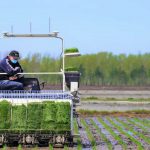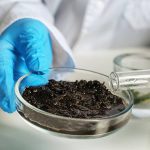Introduction
There are many different types of agriculture, and each has a different impact on the environment. Some types of agriculture are more sustainable than others, and some have a greater impact on climate change. In this blog post, we will explore the different types of agriculture and how it impacts our environment.
What is agriculture?
To begin, let’s take a closer look at what agriculture truly is. As Sciencedaily[1] describes, Agriculture is the process of producing food, feed, fiber, and many other desired products by the cultivation of certain plants and the raising of domesticated animals (livestock).
, It is a vital industry that has been around for thousands of years, and it plays a significant role in our economy and our way of life.
The different types of agriculture
There are many different types of agriculture, each with its own unique set of practices. Here are some of the most common types of agriculture:
subsistence agriculture:
This is the type of agriculture that is practiced in many developing countries. Farmers in these areas grow just enough food to feed themselves and their families.
commercial agriculture:
This type of agriculture is practiced in developed countries. Farmers in these areas grow crops or raise livestock for sale in the marketplace.
mixed agriculture:
This is a type of agriculture that combines both subsistence and commercial agriculture. Farmers in these areas grow crops or raise livestock for both their consumption and for sale in the marketplace.
industrial agriculture:
This is a type of agriculture that is characterized by large farms that use heavy machinery and chemical inputs. This type of agriculture is practiced in both developed and developing countries.
Biological Agriculture:
Biological agriculture is a type of agriculture that relies on the use of natural processes, rather than external inputs such as chemicals, to maintain soil and crop quality. There are many different variations of biological agriculture that include permaculture, sustainable agriculture, biodynamics, agroecology, and aquaculture.
The positive impact of agriculture on our environment
Agriculture can have a positive impact on the environment if it is done in a sustainable way. Sustainable agriculture practices can help conserve water and soil, reduce pollution, and promote biodiversity.
For example, agriculture can help to reduce greenhouse gas emissions. One way this is done is through the use of cover crops. Cover crops are plants that are grown in between crop cycles. They help to nourish the soil and reduce evaporation, which can lead to lower greenhouse gas emissions.
In addition, agriculture can also help to reduce water pollution. One way this is done is by using crop rotation. Crop rotation is the practice of growing different crops in different areas of a field in order to give the soil a break. This helps to prevent soil erosion and keeps the soil healthy.
Overall, when done right, agriculture can be a force for good, benefiting both the natural world and the people who depend on it.
The negative impact of agriculture on our environment
The environment has been adversely affected by the industrialization of agriculture. In the process of mass food production, heavy machinery is used, which leads to the destruction of natural habitats. The use of pesticides and other chemicals has also polluted our air, water, and soil. This has led to the decline of many species of plants and animals and has also made it difficult for people to grow food in a sustainable way.
In order to mitigate the negative impact of agriculture on our environment, we need to learn to farm in a more sustainable way. This means using less harmful chemicals, choosing less energy-intensive methods of production, and Rotating crops to restore nutrients to the soil. We also need to make sure that we preserve natural habitats and promote biodiversity. Only by working together can we hope to make agriculture a positive force for our planet.
This is a major problem, as agriculture is one of the most important activities humans undertake. We rely on agriculture to provide food for our growing population, and the negative impacts of agriculture are putting this essential activity at risk.
The future of agriculture
The future of agriculture is shrouded in uncertainty. Climate change, dwindling resources, and population growth are among the challenges the world faces today. These challenges will require us to rethink the way we farm and the way we use the land.
Agriculture will need to become more efficient and more sustainable. We will need to find ways to produce more food with less water and fewer inputs. We will need to use technology in modern farming to help us manage the land more effectively. And we will need to find ways to protect the land from the impacts of climate change.
It is uncertain what the future holds for agriculture, but it is also full of promise. With the right policies and technologies in place, we can meet the challenges of the future and ensure that agriculture remains a vital part of the world economy.
To wrap up
In conclusion, there are many different types of agriculture, each with its own impact on the environment. Some types of agriculture are more sustainable than others, but all have the potential to affect the environment in a positive or negative way. The most environmentally damaging type of agriculture is industrial agriculture. In contrast, sustainable agriculture is the most environmentally friendly type. Regardless of what kind of agriculture you choose, learn how it impacts the environment before you make your decision.




